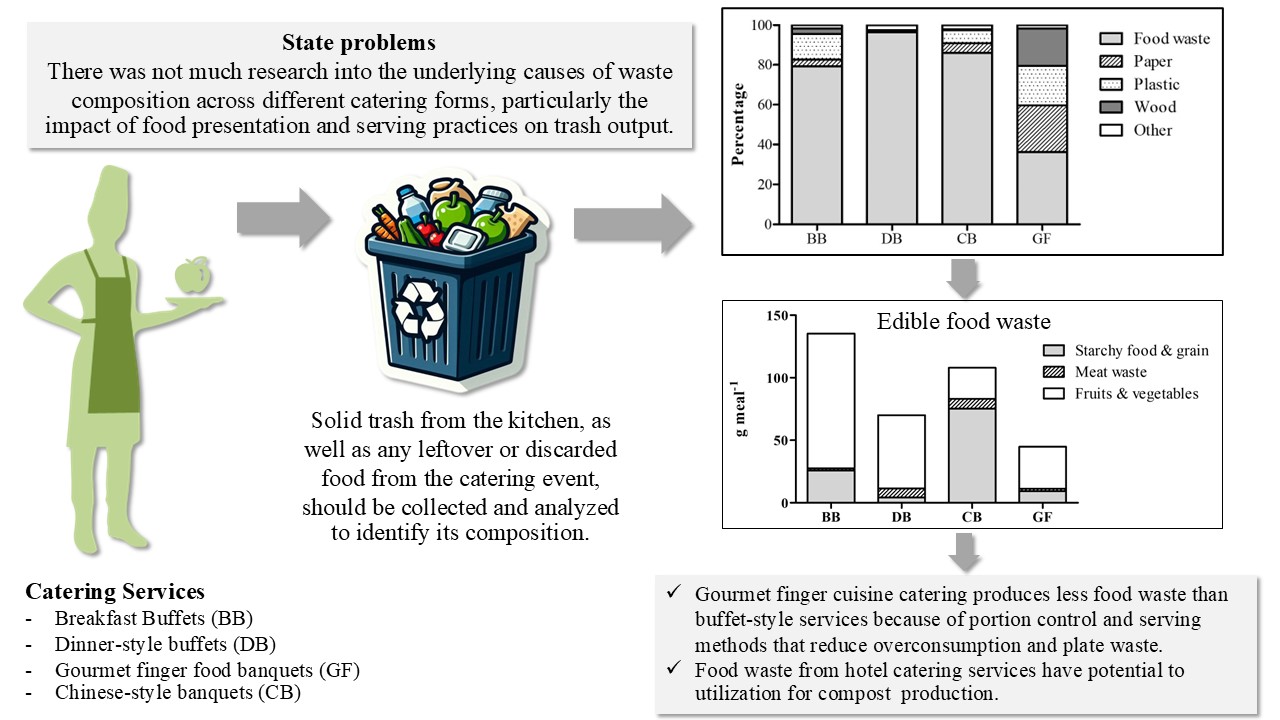Food Waste from Catering Services in Thai Hotels: A Composition Analysis and Practical Guidelines for Effective Utilization
Main Article Content
Abstract
Food waste from the hotel sector is a significant contributor to the overall volume of food waste, particularly in restaurants and food services through various processes. However, precise data on food waste generated by the hotel industry is lacking. This study aims to quantify and characterize the food waste generated during the preparation and serving processes in hotel catering, with the goal of finding efficient solutions to reduce food waste that are appropriate for the hotel and catering sectors. The study presents novel findings that among the different types of catering, dinner-style buffets (DB) generate the highest amount of food waste, accounting for an average of 96.28% of the total waste. In contrast, gourmet finger food catering (GF) is the most efficient, producing the least amount of food waste. Food waste from hotel catering has potential for biomass production, with the average moisture content ranging from 48.86% to 54.93%. The calorific value of the food waste samples averaged 16.99±4.73 MJ kg-1, indicating its potential as an alternative energy source. Additionally, nutrient analysis revealed nitrogen, phosphorus, and potassium concentrations of 11.37%, 0.41%, and 0.58%, respectively. The C/N ratio was low at 5.62±0.89, suggesting a high nitrogen content. To optimize composting, carbon-rich materials like leaf litter are required. By implementing these guidelines, hotels can not only minimize their environmental footprint but also enhance operational efficiency, bolster long-term sustainability, and establish themselves as leaders in responsible waste management within the hospitality industry.
Article Details

This work is licensed under a Creative Commons Attribution-NonCommercial 4.0 International License.
Published articles are under the copyright of the Applied Environmental Research effective when the article is accepted for publication thus granting Applied Environmental Research all rights for the work so that both parties may be protected from the consequences of unauthorized use. Partially or totally publication of an article elsewhere is possible only after the consent from the editors.

